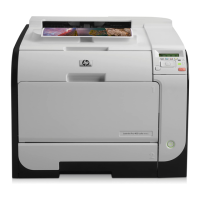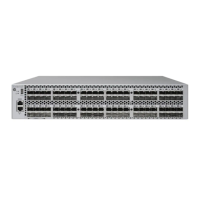\B.$Vol.Subvol.Table1
$Vol.Subvol.TInd1
This removes the need for a mapping clause to restore files to their original locations.
Examples: Basic Backup Commands
• To copy all files on the volume $MYVOL, and subvolume MYSUBVOL to the tape mounted on
the device $TAPE, and to list (on the current output device) the files backed up and files that
caused errors:
1> BACKUP $TAPE, $MYVOL.MYSUBVOL.*, LISTALL
• To back up the file $DATA.RECRDS.MYFILE and all files in subvolume DEBIT on the current
default volume ($DATA):
1> VOLUME $DATA
2> BACKUP $TAPE, (RECRDS.MYFILE, DEBIT.*)
• To back up all files on the volume $DATA, subvolume ACCTS, and list the associated file
names on the output device $LP (a line printer):
1> VOLUME $DATA
2> BACKUP /OUT $LP/ $TAPE, ACCTS.*, LISTALL
• To back up all files on the volume $LIB1, including any primary or secondary partitions on
$LIB1 but not partitions on other volumes:
1> BACKUP $TAPE, $LIB1.*.*, PARTONLY ON, LISTALL
• To use BACKUP's wild-card capabilities:
1> VOLUME $SYSTEM
2> BACKUP $TAPE, (SYS*.*UP, SYS*.?MON, SYS*.COBOL?),&
2> &LISTALL
◦ SYS* matches all subvolumes on $SYSTEM whose names begin with SYS (such as the
system subvolumes $SYSTEM.SYSTEM and $SYSTEM.SYSnn).
◦ *UP matches all of the files that have names ending with UP (such as BACKUP and FUP).
◦ ?MON matches all of the files that have four-letter names ending with MON (such as
IMON and DMON, but not NETMON).
◦ COBOL? matches all files that have six-letter names that begin with COBOL (such as
COBOL1, COBOL2, but not COBOL or COBOLLIB).
Backing Up Format 1 and Format 2 Files
The two formats for disk files are:
• Aformat 1 file is any file created on a system running a NonStop operating system RVU
preceding G06.00 or D46.00, or a file created on any newer NonStop operating system
RVU that is smaller than 2 GB minus 1 MB.
• Aformat 2 file is either a large format file, or a file that can contain larger partitions than a
file created on RVUs preceding G06.00 or D46.00. A format 2 file can exceed the 2 GB
minus 1 MB size limit of a format 1 file.
For more information on handling format 1 and format 2 files, see the File Utility Program (FUP)
Reference Manual.
WARNING! You cannot restore format 2 files to a system that does not support large format files.
If your VOLUME MODE backup tape contains both format 1 and format 2 files, do not perform a
RESTORE to a system that does not support format 2 files.
BACKUP Guidelines and Examples 73

